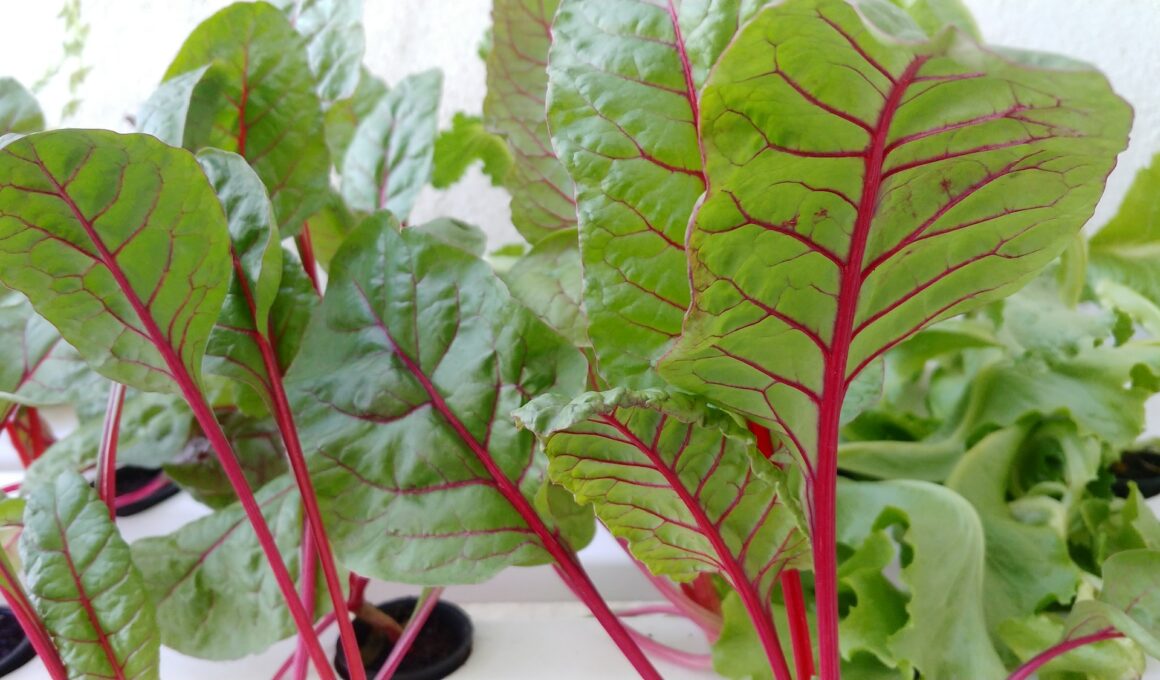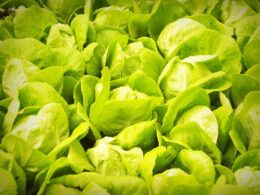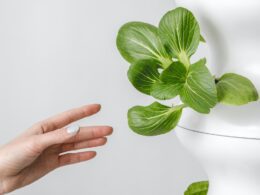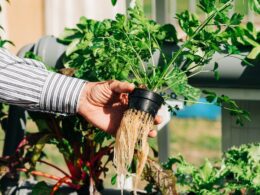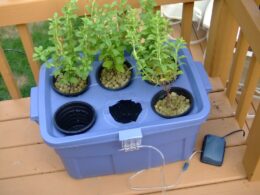Have you ever wondered about the benefits of hydroponics? It’s a popular method of growing plants that uses water and nutrients instead of soil. But did you know that not all plants can be produced using hydroponics?
There is one particular plant that stands out from the rest and cannot be grown this way. In this article, we’ll explore which plant cannot be produced by hydroponics and why.
As a plant enthusiast, you may be familiar with the process of hydroponics. It’s a modern and efficient way of cultivating plants, especially in urban areas where space is limited. But even with all its benefits, there is one plant that cannot be grown using this method.
This particular plant has been a topic of fascination for many years due to its unique flavor and aroma. So, if you want to know which plant cannot be produced by hydroponics, keep reading.
What is Hydroponics?
You’re in for a treat as we explore the exciting world of hydroponics, a method of growing plants without soil! Hydroponics is a system that uses water, nutrients, and various mediums to grow plants. It’s a popular method because it allows you to grow plants all year round, regardless of the weather outside.
One of the advantages of hydroponics is that it’s a more efficient method of growing plants. It uses less water and nutrients than traditional soil farming. This means that you can grow more plants in a smaller space, which is great for those who have limited space. Additionally, hydroponic plants grow faster and produce higher yields than traditional soil-grown plants.
However, there are also some disadvantages to hydroponics. One of the biggest challenges is maintaining the correct balance of nutrients in the water. If the nutrients are not balanced correctly, the plants can become sick and die.
Additionally, since hydroponics relies on machines and technology, it can be more expensive to set up and maintain than traditional farming methods.
Overall, hydroponics is a fascinating and innovative way to grow plants. While there are some disadvantages to consider, the advantages of hydroponics make it a worthwhile investment for those who want to grow plants in a more efficient and environmentally-friendly way.
Durian Fruit Tree
If you’re looking to savor the creamy, rich taste of durian fruit, you’ll be disappointed to know that it’s not possible to grow it through hydroponics – nothing beats the real deal!
Durian cultivation challenges are aplenty and experts believe that hydroponics may not be the best way forward for this fruit tree. Unlike other crops, durian is a slow-growing tree that requires specific environmental conditions to thrive. Hydroponics may not be able to provide the ideal conditions for the durian tree to bear fruit that meets the market demand.
Durian fruit is a popular delicacy in many parts of the world and the demand for it is on the rise. However, cultivating it is not easy and requires extensive knowledge and experience. Durian trees are sensitive to changes in the environment and require a lot of care throughout the growth process.
In addition, the fruit itself has a short shelf life, which poses another challenge for growers. These factors make it difficult to meet the market demand for durian fruit through hydroponics.
In conclusion, while hydroponics is an efficient method for growing certain crops, it may not be the best option for durian cultivation. The unique needs of the durian tree and the challenges posed by the market demand make it difficult to produce the fruit through hydroponics. Therefore, if you’re a durian lover, your best bet is to savor the real deal and enjoy the fruits of the growers’ hard work and dedication.
What is Something That Hydroponics Cannot Provide for Plants?
Hydroponics cannot provide the natural symbiotic relationship between plants and soil that is essential for their growth. Despite meeting the basic hydroponics requirements, plants miss out on the multitude of nutrients and beneficial microorganisms found in soil. This limitation affects the overall health and resilience of the plants, potentially leading to deficiencies and decreased resistance to pests and diseases.
Why Durian Fruit Trees Cannot be Produced Using Hydroponics
To grow durian fruit trees, you’ll need to rely on traditional methods rather than hydroponics, as the unique requirements of the tree and the challenges of meeting market demand limit its potential for indoor cultivation. Here are some reasons why:
-
Durian cultivation challenges: Durian trees are known for their finicky nature and selective climate requirements. They need a lot of sunlight, warmth, and humidity to grow to their full potential. These conditions are hard to recreate indoors, which is why durian trees are usually grown outdoors in tropical regions like Southeast Asia.
-
Soil vs Hydroponics for fruit trees: Unlike many other fruit trees, durian trees have deep roots that require a lot of space to grow properly. In hydroponics, the roots are confined to a small container, which can stunt their growth and affect the overall health of the tree. Durian trees also require specific nutrients and minerals found in soil, which are harder to replicate in a hydroponic system.
-
Meeting market demand: Durian is a popular fruit in many parts of the world, but it’s also notoriously difficult to transport and store due to its strong, pungent odor. This makes it hard to meet demand through indoor cultivation, which is why most durian is still grown and harvested in its natural habitat.
Overall, while hydroponics may be a viable option for many fruit trees, durian fruit trees present unique challenges that make it difficult to produce them using this method. If you want to grow durian trees, your best bet is to stick with traditional methods and grow them outdoors in a tropical climate.
Alternative Methods of Cultivating Durian Fruit
If you’re determined to taste the delectable flavor of durian fruit, there are other methods of cultivation that can satisfy your craving. One such method is vertical farming, which is a type of soilless agriculture that involves growing crops in vertically stacked layers. This method is becoming increasingly popular due to its ability to produce high yields in small spaces, making it perfect for urban areas.
Another alternative method of cultivating durian fruit is through the use of traditional farming techniques. While it may not be as efficient as vertical farming, traditional farming still has its advantages. For one, it allows for a more natural growth process for the plant, ensuring that it develops the necessary nutrients and flavors that make durian fruit so unique.
In the end, the method of cultivation you choose ultimately depends on your personal preferences and resources. Both vertical farming and traditional farming have their pros and cons, so it’s up to you to decide which one is right for you. No matter what method you choose, however, one thing is for sure: With a little patience and determination, you’ll be enjoying the delicious taste of durian fruit in no time.
Conclusion
As you’ve learned about the alternative farming techniques for durian fruit, it’s evident that there are a variety of options available to cater to your specific needs and resources. However, it’s important to note that one limitation of hydroponics is that it can’t produce all types of plants.
There are certain plants that require soil and natural light to grow properly, and hence cannot be grown using hydroponics. Hydroponics is a soilless method of growing plants that uses nutrient-rich water instead of soil. While it’s an efficient way to cultivate many types of plants, there are some limitations to this method.
For example, plants that have deep roots or require a lot of space to grow may not do well in hydroponics. Additionally, some plants may require specific nutrients that are difficult to provide in a hydroponic system.
In conclusion, while hydroponics is a great alternative farming technique for many plants, it’s not a one-size-fits-all solution. It’s important to consider the limitations of hydroponics and choose the best method of cultivation for each individual plant. By exploring different farming techniques, you can find the best way to produce healthy and delicious crops, including the beloved durian fruit.
Frequently Asked Questions
What other types of plants cannot be produced using hydroponics?
If you’re looking to grow plants using hydroponics, it’s important to know that different plant species have different requirements. While many plants thrive in hydroponic systems, there are some that may not do as well.
Additionally, there may be commercial restrictions on growing certain plants using hydroponics. It’s important to do your research and choose plants that are well-suited for hydroponic growing, and that can be grown legally in your area.
By taking these factors into consideration, you can ensure that you have a successful and safe hydroponic growing experience.
What are the advantages of using hydroponics to cultivate plants?
If you’re looking for a more efficient way to grow plants, hydroponics may be the solution you need. One of the biggest advantages of hydroponics is the increased yield you can achieve, thanks to the precise control over the growing environment.
Another benefit is the efficient use of resources, as hydroponic systems use less water and nutrients than traditional soil farming. Nutrient absorption and pH balance are also carefully managed in hydroponics, ensuring optimal growth conditions for your plants.
All of these benefits make hydroponics an attractive option for those looking to grow plants indoors or in areas where traditional farming is not possible.
How does the process of hydroponics differ from traditional soil-based farming?
If you’re curious about hydroponics and how it differs from traditional soil-based farming, there are a few key differences to keep in mind.
For starters, hydroponic systems rely on a nutrient-rich water solution to feed plants directly, rather than relying on soil to provide nutrients. This can lead to higher nutrient absorption efficiency, which means plants can grow faster and healthier.
Additionally, hydroponic systems can be more easily controlled and monitored for factors like pH levels and temperature, which can help ensure optimal growing conditions.
Of course, there are also some limitations to hydroponics – for example, certain plants may not thrive in this environment, and it can be more expensive to set up and maintain a hydroponic system compared to traditional farming methods.
Nonetheless, many people find that hydroponics offers a unique and innovative way to cultivate plants, and it’s worth exploring if you’re interested in sustainable agriculture.
Can hydroponics be used to grow plants in all types of environments, including extreme temperatures?
If you’re interested in hydroponics, you might be wondering if it can be used to grow plants in extreme environments. The answer is yes! Hydroponics offers an alternative growing method that can be used in a variety of environments, from hot and dry to cold and wet.
With the right setup, you can use hydroponics to grow a variety of plants, including fruits, vegetables, and herbs. One of the benefits of hydroponics is that it allows you to control the growing conditions, so you can adjust the temperature, light, and nutrient levels to meet the needs of your plants.
Whether you’re growing plants in a desert or a tundra, hydroponics can be a great option for producing healthy and sustainable crops.
Are there any potential health risks associated with consuming fruits and vegetables grown using hydroponics?
When it comes to consuming fruits and vegetables grown using hydroponics, there may be potential health risks to consider. While these plants can offer high nutritional content, there are concerns about the use of pesticides, herbicides, and other chemicals in hydroponic systems.
Additionally, the lack of soil in these systems means that plants may not have access to all necessary nutrients, leading to potential deficiencies. It’s important to research the specific hydroponic system and growing practices used by the producer before consuming their products.
While there may be benefits to hydroponic growing, it’s crucial to prioritize safety and make informed choices when it comes to the food we eat.
Conclusion
So, you have it. Hydroponics is a fantastic way to grow plants and is becoming increasingly popular. However, there are some plants that simply can’t be produced using this method, and the durian fruit tree is one of them.
While this may be disappointing for some, there are alternative methods of cultivating durian fruit that are just as effective. By understanding the needs of this unique and delicious fruit tree, you can still enjoy the taste of durian without having to rely on hydroponics.
So, go forth and explore the world of durian cultivation, and enjoy the fruits of your labor!





